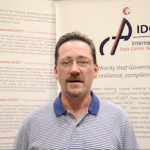Data Center Infrastructure Expert®
Data Center Infrastructure Expert®
5 Days, 3 Professional Certifications
This course targets developing experts who can lead the data center industry as consultants, architects, experts, providing the right skill sets including engineering, design, grading concepts.
Upcoming DCIE℠ Events
Course Description
The DCIE course provides professionals the right skill sets from the foundational concepts to the engineering, design, classification and grading concepts, which are driven by the industry’s live experiences and best practices. DCIE® clarifies the taboos in the industry, the gray areas where all providers, operators, engineers and experts continuously argue and question and resolves ambiguities in the expert’s mind as to how to plan, design and build data centers. The DCIE® requires achievement of unparalleled and thorough understanding of data center infrastructure fundamentals as they relate to engineering & design.
Who should take this course?
- Consultants
- Architects
- Data Center Experts
- Professionals
what you study
The DCIE® course clarifies the taboos in the industry, the gray areas where all providers, operators, engineers and experts continuously argue and question and resolves ambiguities in the expert’s mind as to how to plan, design and build data centers
Learning Outcomes
This course teaches how to streamline processes, increase efficiency and productivity whilst maintaining high availability. The core concepts are based on demonstrated principles, which are optimized from lessons learned from Data Center front-runners.
Prerequisites
- None.
Course Features
- DCIS®
- DCES®
Day 1
Data Center Overview
Data Center History
-
Data Center Definitions
-
The Data Center Beast
-
Data Center Downtime & Outage
-
Present Data Center Standards
-
Future of Data Center Standards
The Infinity Paradigm®
-
Application Ecosystem (AE)℠
-
Core & Pyramid Models
-
The Organization
-
The 7 Abstraction Layers
- Application Layer
- Platform Layer
- Compute Layer
- ITI Layer
- SFI Layer
- Site Layer
- Topology Layer
-
Application Delivery Model (ADM)
-
Application Delivery Infrastructure (ADI)
-
Data Center Node (DCN)
-
Logical Infrastructure
-
Physical Infrastructure
Grading Systems
Data Center Tiers & Classes
-
Data Center Grade Levels
-
AER, OER, EER, RER, SER
-
Efficacy Score Rating
Data Center Development
Data Center Tiers & Classes
-
Data Center Development Process
-
Data Center Phases
Site, Civil & Architecture
Data Center Site Selection & Criteria
Data Center Site Proximity, Hazard & Risks
Data Center Topology
Data Center Structure
Data Center Construction
Data Center Interior Fit-out
Data Center Space Relationships
Data Center CR, ER, MDA, HDA and ZDA
Data Center Raised Floor System
Data Center Grounding & Bounding
Data Center Earthing
Power Systems
Data Center Site Selection & Criteria
Logical Electrical Flow
DC, AC, W, AV Rates and Concepts
Utility Service
High Voltage Systems
Switchgear
Transformers
Low Voltage Systems
Uninterruptible Power Supply (UPS) Systems
UPS Configurations
Battery and Battery Types
Generators
Fuel Tanks
Power Distribution
ATS, STS
Power Cabling
Busbar Trunking System (BTS)
EPO
Grounding
Lightning Protection System
Alternative Power Sources
EF, MF, EMF, EMI
EMF & EMP Shielding
Day 2
Data Center Cooling
Environmental Air
Cooling Capacity
Precision Cooling
Direct Expansion (DX) Systems
Non-DX Systems
Cooling Methodologies
Cold-Aisle / Hot- Aisle
CRAC/CRAH
Cooling Topologies:
Open CRAC Systems
Aisle Containment (Cold & Hot)
In-Row Cooling
In-Rack Cooling
Cooling Towers
Chillers
Data Center Water Supply
Fire Protection
Fire Types and Classes
Smoke and Heat Detection
Aspiratory Detection and Sensing
Sprinkler Systems
Gas Suppression Systems & Agents (FM200, Novec, etc.)
Fire Prevention Technology
Data Center Safety
Data Center Security
Physical Infrastructure Security
CCTV
Access Control
Mantraps
Barbwires
Security Protocols & Procedures
IT Infrastructure Security
Data Center Structured Cabling
Cabling Layout
Patching & Termination
Labeling
Intelligence
IT Infrastructure
System
Storage
Networks
Virtualization & Cloud
External Telecom Connectivity
High Availability Designs
Data Center Efficiency
Cost of Energy
Power Usage
Power Usage Effectiveness (PUE)
Data Center Infrastructure Efficiency (DCIE)
Applications and Hosting Models
Applications
Application Delivery Architecture
App Tiers
Colo vs Managed Hosting
ASP Hosting
Public & Private Clouds
Monitoring and Management
MMS, EMS, EPMS, BMS
Temperature Monitoring
Leak Detection
Integration
Network Operation Center (NOC)
Systems
Procedures
Control
Data Center Trends
Latest Data Center Technology Trends
Latest Data Center Industry Trends
Examination
Day 1
Intro to Data Center Engineering
Engineering Importance
Data Center Components
Data Center Key players
Tools and Techniques
How and Where to Get Help
Data Center Engineering Process
The Data Center EPS
Phased Process
Adaptive Need Conversion
Understanding Application
App Architecture
ETT, TPS, Load and Complexity Factor
Data Center Classification
Data Center Tiers and Classes
Data Center Grade Levels
Data Center Definitions and Options
The Infinity Paradigm® Review
Standard Requirements
Designing with Limitations
Data Center Availability Engineering
Operational Effectiveness
Types of Availability
Common Availability Figures
Calculating Availability
Redundancy
Design Efficiency
Data Center Site and Building
Site Selection Considerations
Architectural
Building Systems
Walls, Structural Ceiling & Floor Systems
Day 2
Data Center Power Systems
Electrical Systems – Macro View
Power System Goals
Electrical Concepts: PF, KW, KVA, KVAR
3-Phase Power
Single Line Diagram (SLD)
Power Transmission
Utility Power
Power Feed Classifications
Break before Make
Make before Break
Topologies
Unit Substations
Circuit Breakers
Switchgear
Arc Flash
Standby Generator
Transfer Switches (ATS, STS, etc.)
UPS Systems
Power Distribution Unit (PDU)
Busbar Trunking System (BTS)
Calculating Power Requirements & Load
Important Considerations
Data Center Lighting Systems
Data Center Grounding System
Effective Grounding System
Equipment & Materials
Methods and Disciplines
Data Center Cooling & Mechanical Systems
Mechanical Systems Overview
Latent vs Sensible Cooling
Sensible Heat Ratio
Cooling Cost Engineering
Humidity Cost Engineering
Heat Transfer Principles
Environmental Design Conditions
HVAC
Cooling System Topologies
Precision Air Cooling
Chilled Water Cooling
Direct Expansion (DX)
Comparing Solutions and Designs
Heat Transfer Fluids
Temperature Differential
CAV vs VAV Systems
Cooling Measurements
Cooling Layouts
Cooling Efficiency
Day 3
Data Center Fire Protection
Physical Infrastructure Security
General Considerations
Detection Systems
Prevention Systems
Suppression Systems
Fire Concepts
Fire Classifications
VESDA and HSSD
Halocarbon vs Inert Agents
Fire Suppression Sizing & Calculations
Water-based Systems
Data Center Structured Cabling
Connectors
UTP, FTP, STP Cables
Singlemode vs. Multimode Fiber
Data Center Cabling Topology
Horizontal Cabling
Backbone Cabling
Cabling Security
Structured Cabling Considerations
IT Infrastructure
Data Center Telecommunication
Data and Data Transmission
DSx vs. Tx
Telecom Categories and Capacities
Optical Carrier
SONET, OC, STS, SDH, STM
Signal Hierarchy
Dark Fiber
Information Technology
Server Types and Components
Storage Types and Media
Storage Engineering
RAID Methods
Network Infrastructures
Network Topologies
Routing & Switching Protocols
IGP, BGP, OSPF, VRRP, MPLS, ATM, Frame Relay
IPv4 vs. IPv6
OSI Model
Load Balancing Types & Methods
6-Pack Architecture
Firewalls and Intrusion Detection
Virtual Private Networks
VPN Protocols: IPsec, L2TP, PPTP, SSL
Virtualization Types & Methods
Cloud Infrastructure
OpenStack
Data Center Safety & Security Systems
CCTV, DVR, NVR, etc.
Access Control Systems
Mantraps & Airlocks
Tracking & Tracing
The Security Office
IT Security
Safety Principals

 +
+  )
)




















